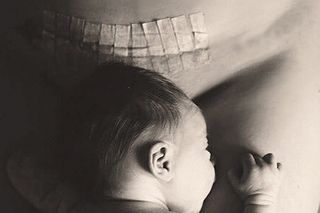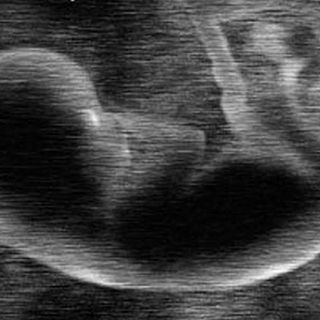
How to Care for a C‑Section Wound
If all goes well, in a few months you should barely know it’s there.

C-sections are a major surgery, one that involves cutting through the abdominal wall, tearing abdoninal muscles apart to expose the uterus, and then cutting through the wall of the uterus. As a result, recovery is like any from a major surgery, something that many people forget because of how common C-sections are. The good news is that because C-sections are so routine, they are extremely safe. However, proper care for the wound post-op is essential.
During a C-section, doctors cut through several layers of different tissue; after the baby comes out, the uterus will be closed with dissolveable stitches, while the abdominal tissue may be glued or stapled shut. (Depending on how the wound was closed, you may receive specific instructions about how to handle that type of wound recovery.) When the surgery is completed, hospital staff will cover the wound with an adhesive bandage that holds the skin in place. In most hospitals, this bandage will be changed before you leave the hospital. You will be instructed when to remove the bandage you’ve worn home. Usually, you will be told to bathe with the bandage and leave it on for a few weeks, so the skin underneath can heal before it is exposed to anything that might get into your bloodstream and cause a serious infection. Once this bandage comes off after a few weeks, the wound is superficially closed, and it’s harder for the would to get infected. However, at this juncture it is particularly important to care for the wound carefully, because infections can still occur.
C-section wounds can be washed with soap in the shower, however you should avoid rubbing any lotion on them. It’s also important to wear underwear and pants that don’t rub the wound, because this could irritate the skin or cause discomfort. The first few weeks after a C-section are when the most complications occur, so if you see redness, swelling, pus, or feel intense pain near or around the wound, call your doctor immediately. (The strange numbness around the scar, unfortunately lasts for months or even years!)
If you are worried about the cosmetic implications of having a scar, remember that for scheduled C-sections, or even ones that are not done on an emergency basis, doctors are usually making incisions at a level where they will be covered by most swimsuits or underwear. (Emergency C-sections are sometimes done with a vertical incision, which is more likely to show.) But remember that C-section scars, like any other, will fade with time. If you are concerned about the appearance of the scar, you can try to use silicon strips, which are supposed to reduce the appearance of scars when used properly. However, it’s important to avoid starting the use of silicon strips too early (within a few months of the surgery), because they can also trap bacteria inside the wound; if the surface of the skin is not completely healed, the use of silicon strips could actually cause an infection.
As long as you clean the skin often (in a daily shower), and avoid putting anything tight or constraining on the wound, after a few months you should barely notice your C-section scar.
Related


New Blood Test Can Predict Preterm Labour More Cheaply Than Sonography
